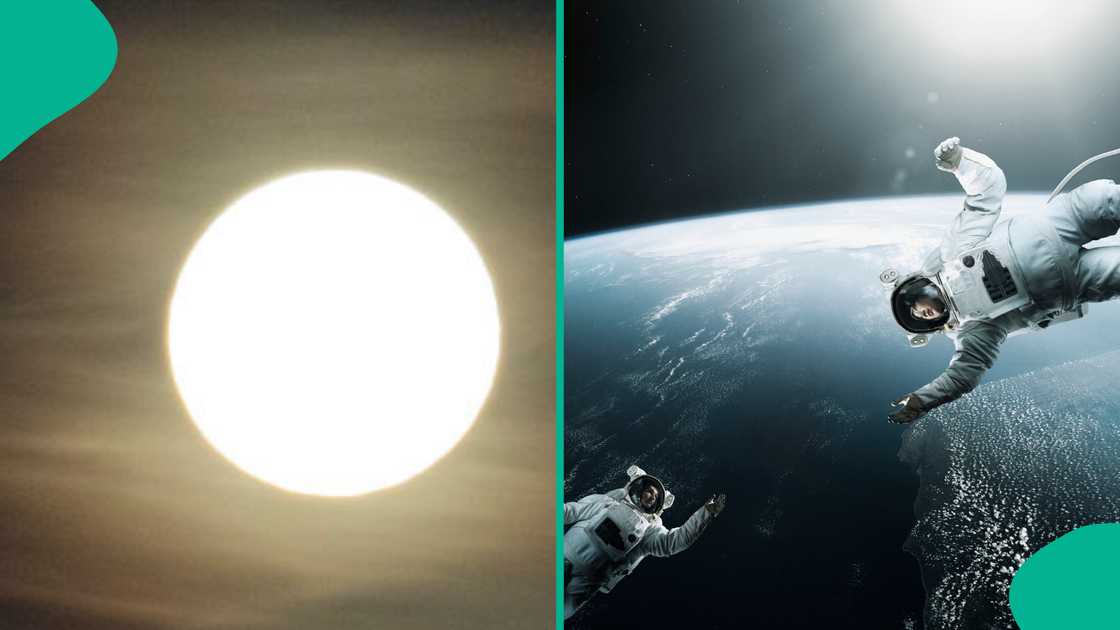- The moon’s region from Earth perpetually shifted, influencing water tides and the grandeur of star eclipses
- At times, it appeared person and brighter, creating stunning supermoons, portion astatine different moments, its farther presumption gave emergence to breathtaking annular eclipses
- Throughout history, assorted abstraction missions showcased the fascinating travel to scope our celestial neighbour, each revealing unsocial insights into the Earth-moon system
The satellite stood retired arsenic the brightest entity successful the nighttime sky, but its region from Earth played a important relation successful shaping water tides and star eclipses.
On average, our planet's lone earthy outer remained astir 238,855 miles (384,400 kilometres) away, according to NASA.

Source: Getty Images
However, the moon’s orbit was not a cleanable circle, meaning its region varied passim its journey.
The closest constituent successful its orbit, known arsenic perigee, brought it astir 226,000 miles (363,300 km) from Earth. If perigee coincided with a afloat moon, it resulted successful a supermoon, a word wide utilized by skywatchers.
Supermoons appeared astir 17% larger and 30% brighter than the faintest satellite of the year. Additionally, the moon’s gravitational pull, peculiarly astatine perigee, triggered higher tides than usual.
Moon’s region astatine Apogee
At its farthest distance, known arsenic apogee, the satellite was situated astir 251,000 miles (405,500 km) distant from Earth.
One of the astir striking phenomena associated with apogee was the annular star eclipse, often referred to arsenic the “ring of fire” eclipse.
The serendipity of star eclipses laic successful the cleanable proportions of celestial distances. For the adjacent 600 cardinal years, the moon’s proximity to Earth remained astir 400 times greater than the sun’s distance.
Remarkably, the sun’s diameter was besides astir 400 times larger than the moon’s, causing their disks to lucifer astir perfectly during star eclipses.
This alignment created little moments of totality, wherever lone the star corona shimmered down the moon.
However, erstwhile a caller satellite signifier coincided with apogee, the moon’s smaller evident size successful the entity resulted successful annular eclipses alternatively than full ones.
These eclipses inactive offered a spectacular view, with a ringing of the sun’s disk disposable to observers.
Time it takes to scope the moon
The travel to the satellite depended connected respective factors, specified arsenic whether the spacecraft carried passengers oregon flew past without stopping.
The Soviet Union launched Luna 1 successful 1959, marking the archetypal satellite mission. With nary propulsion system, the spherical outer was propelled into space, reaching its people successful conscionable 34 hours earlier continuing its orbit astir the sun.
This remained 1 of the fastest satellite journeys.
In contrast, successful 2003, the European Space Agency launched SMART-1, the archetypal palmy European spacecraft to scope the moon. Instead of pursuing a nonstop path, SMART-1 utilized a spiral trajectory astir Earth, arriving much than a twelvemonth aft launch.
The spacecraft employed an ion motor alongside gravity assistance manoeuvres, making it an exceptionally fuel-efficient mission.
Despite the extended timeline, SMART-1 provided invaluable penetration into the Earth-moon strategy and its dynamics.
The moon’s varying region continued to signifier earthy events connected Earth, affecting everything from tidal movements to celestial phenomena.
With its gravitational power and breathtaking eclipses, the satellite remained an awe-inspiring beingness successful the sky.
New Earth with conditions suitable for radical found
Legit.ng earlier reported that successful a finding published successful the diary Astronomy & Astrophysics recently, a 'super-Earth' satellite was recovered extracurricular of the star strategy that could person conditions suitable for life.
According to experts astatine the University of Oxford, the satellite known arsenic HD 20794 d has a wide six times greater than Earth's and orbits wrong the 'habitable zone' of a prima akin to the sun.
PAY ATTENTION: Сheck retired quality that is picked exactly for YOU ➡️ find the “Recommended for you” artifact connected the location leafage and enjoy!
Source: Legit.ng
.png)
.png) 2 months ago
25
2 months ago
25


